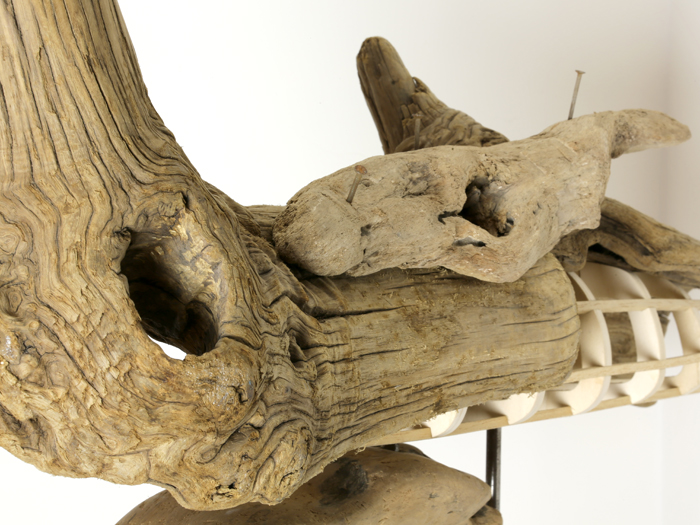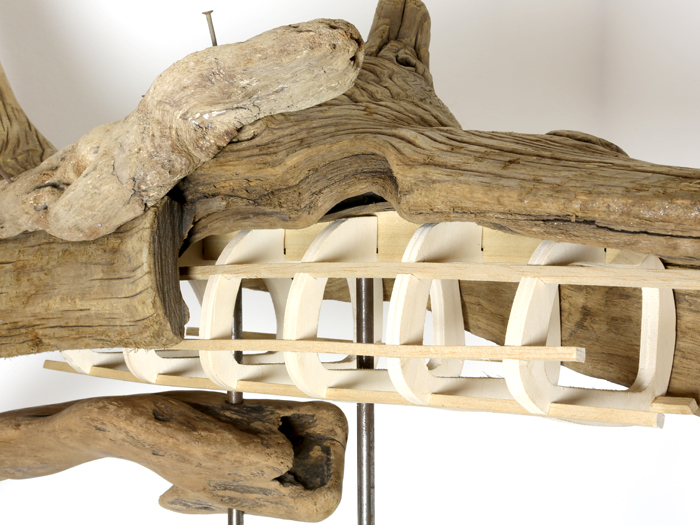Arbanese Phacomochère Unicornis
Dimensions : 88cm x 20cm x 179cm
Phacomochère Unicornis is a powerful animal with a unique horn rising to the sky. Offering
great protection, the latter links it directly to the mythology, close to the Unicorn attribute. This
characteristic, highly prized by collectors, has unfortunately contributed to the complete
extermination of the specie.
The woods collected for its reconstitution were all found in Stand Up Paddle, floating, in the
calm waters of some creeks of the Giens peninsula.
A legendary creature has resurfaced and this specimen is totally endemic to the peninsula.
Even when brought back to its fossil stage, this unique representative of the Arbanese specie
still displays the characteristic that makes it so typical: the animal can not help but pull out its
tongue.
Natural bone prominence of the chin, fatigue, heat, thirst for anisettes or some cool « rosé »
liquids ... science will not have had time to find out the real origin (s).
The last studies, all Darwinian, dating from the last century, do classify the species as politically
incorrect in the animal kingdom. After all, it is difficult for a « phacomochère » to be likened to
wild pigs, warthogs, rhinos, unicorns, dragons, chimeras or gargoyles all at once.
The animal is, it is said, very stealthy, rather fierce, rebellious, with a strong wooden head, and
displays by its physical peculiarity (sticking its tongue out) a mixture of insolence and
contempt. This apparent natural arrogance, totally specific to this group of rhinocerotids, will
be the subject of a real fascination among some observers. It will be a source of great vexation
in others, particularly in the sight of all hunters who, feeling niggarded, will have tracked the
animal for a long time, until the elimination of its last representative.
Like a small Noah's Ark, an inverted hull structure inspired by shipbuilding, stands, on its
wooden base, this rare relic coming out of salted waters. A keel supports the skull and skeleton
frames form the interior curves of its wood.
Thanks to Julien Veysseyre (ESSE Kiteboarding) and Hervé STIEFEL



